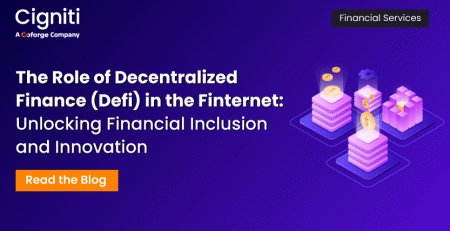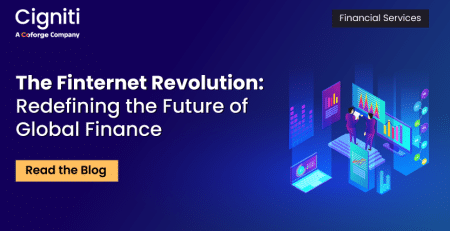Top Digital Payment Trends to Watch Out For in 2023
In 2022, we already saw the emergence of payment SaaS, the adoption of Blockchain Technology, and the evolution of Central Bank Digital Currency. We also saw new payment modes like Buy Now Pay Later, Biometric Authentication, and Biometric Payments and an increase in the use of AI and ML in fraud detection.
Now, what should we look out for in 2023?
The evolving trends in payments so far clearly show that the first thing in every innovation focuses on enhancing customer convenience and transaction security. The most used payment means will be the most convenient and secure.
Solutions to customers’ problems will be the payment trends to look forward to in 2023. The most common issues are as follows:
- Carrying multiple physical cards, remembering PIN, CVV of these cards
- Issues in payment when or where there is no network connectivity
- Ever-evolving new means of fraud
Let us see the solutions we already have or can have against each of the above problems.
Solutions to the issue of having and carrying multiple cards and remembering the PIN and CVV of the cards:
- Increase in mobile wallet use with the help of which you can send money to other users, receive money from other users, store cash inside the wallet, pay utility bills, buy tickets, get rewards, and many more. There is no need to carry cash or cards in your physical wallet. But like multiple cards, there are also numerous wallets, which are difficult to maintain.
- Rise of a one-stop digital wallet – If money is in the digital wallet, people need not remember the PIN and CVV of their physical cards. But there are different digital wallets now – AmazonPay, GooglePay, PhonePe, etc. If a person does not have an account in a particular wallet, he will not be able to use it. There should be a wallet hub that accepts payments from any wallet account holder and transfers money to another wallet account holder of a different provider. It should be a one-stop wallet. QR Code payments will increase since all other wallets can accept them.
- Consolidation of all your cards in a digital wallet – There should be a means to have your metro/oyster card, any store prepaid card, credit/debit card, fitness club card, a country-unique identification card like PAN, Aadhaar, Social Security Number all inside a single digital wallet so that any of them can be used wherever appropriate without the need of carrying them physically.
- Rising of digital platforms like UPI, PIX, and Zelle – Since easier-to-remember aliases like phone numbers are used, it is convenient and easier for customers to use these means of payment. Hence, these platforms will increase, decreasing payments using physical debit and credit cards.
- Acceptance of cards in digital platforms – Accepting payments through Credit Cards and Debit cards in digital platforms like UPI will give customers additional means of digital payments. So, if the cards are linked to the digital platform, customers can digitally use them for their transactions.
Considering the above, will digital platforms and wallets finish off debit and credit cards? No, digital platforms and wallets may not finish off physical cards, as cash transactions have not ended with the growth of card transactions. However, with the increase of digital platform payments, payments using direct physical cards will decrease. However, since cards are being accepted on digital platforms, it will benefit the business of both digital platforms and cards.
Regulators are and will be encouraging other convenient payments at merchants, different payment channels like ATMs, feature phones, innovations across cross-border payments, stock markets, etc. With this approach, the regulators will reduce the monopoly of existing brands. Thereby, whether the monopoly of payment players like Visa, Mastercard, and NPCI will decrease is a question, regulators have opened up the platform to the FinTech and other entities for healthy competition, innovations, and unique solutions to provide more resilient and utility solutions to customers that will address current system pain points and issues.
- Invisible payments will also increase since they are automatically triggered in the background without customer intervention. With no visible payment methods such as physical cash, credit and debit cards, smartphones, and wearable devices, just paying via a virtual wallet like you have in Uber for a ride, AmazonGo for shopping, and Alipay for restaurant bill payments. If money is in the wallet, there is no need to remember or do anything for payment.
- IoT (Internet of Things) payments will also be on the rise since a person can just set up the system so that his order and payments for utilities, order supplies, groceries, and detergents are automatic, and he need not remember to refill and pay for them.
Solutions to the issue in payment when and where there is no network connectivity:
- The rise in mPOS – With Mobile Point of Sale (mPOS), people can go to rural areas inside cinema halls and carry them in food trucks without needing in-store payments.
- Increase in means of offline digital payments – Acceptance of different methods of offline digital payments without the need for the internet will evolve and increase.
Crunchfish AB has already developed a secure payment system protocol that can allow a user to make a digital payment in Central Bank Digital Currency (CBDC) while both the sender and receiver are temporarily offline.
Solutions to the ever-evolving new means of fraud:
- The rise in biometric payments – Any form of biometric authentication like fingerprint scans, facial recognition, iris recognition, heartbeat analysis, and vein mapping will be beneficial to have customer trust and security. Since these are uniquely human characteristics, these means of authentication bring safety and efficiency.
Beginning of this year itself, Papara, the market-leading Turkish fintech, launched its Voice Card, the world’s first debit card enabling swift and easy transactions and payments for visually impaired users by audio technology. Papara’s Voice Card must be linked to the Papara app on a user’s mobile phone. Once inserted at a Voice Card POS payment terminal, the user will hear the amount due to be paid on their phone. Visually impaired users can use the debit card without any external assistance, allowing them to manage their finances safely and independently for the first time.
- Use of Web3 for payments – Now, with Web3, which uses machine learning and Distributed Ledger technology, benefits like enhanced transparency, data ownership, uninterrupted services, security, and improved communication for mobile and net banking users can be reaped. New functionality or payment methods or modes will evolve using the Web3 platform.
Conclusion
A unified digital platform is (1) where a person can pay instantly or schedule future payments, (2) using any type of card present in their digital wallet, (3) to any contact or phone number, (4) in online or offline mode, (5) using their unique identifier, through a transparent and secure technology.
Cash, card, cheque, and other various means of payment will exist parallel to any form of digital payment, but their number will decrease with the advent of new forms and means of digital payments.
Cigniti Technologies is a global leader in providing AI-driven, IP-led strategic digital assurance, software quality engineering, software testing, automation, and consulting services. Cigniti has successfully delivered services for nearly 20 years, implementing its Test Center of Excellence, delivering Managed Testing Services, and providing end-to-end Banking, Financial Services, and Insurance (BFSI) automation and testing services for leading companies in the BFSI industry across multiple geographies.
As the frontrunners of technology advancement, we help leading global enterprises, including Fortune 500 & Global 2000 across 23 countries, leapfrog their digital transformation journey and propel them to expand their digital horizons.
Schedule a discussion with our Banking and Digital Transformation experts to find out more about the latest trends in the digital payments sector and how to achieve high levels of customer satisfaction and retention.





Leave a Reply